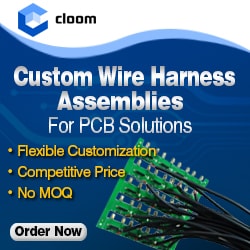About UPC vs. APC, there are various types of optic fiber connectors out there. The most common styles include ferrule, straight tip, lucent (tiny), and subscription (square) connector. All these connectors have their advantages and disadvantages, and some suit only specific use cases.
For instance, the ferrule connector is vibration-proof and thus perfect for situations where the connection is in motion. Therefore, choosing the correct connector will influence how solid and reliable your relationship will be.
However, this is not what we will discuss in this guide. Instead, we will highlight polish/grinding types and why they matter. In this case, there are two polishing types you need to worry about; UPC and APC.
We will go over these polishing types and which one gives you the best performance.
Get Your Free Sample!
Explore our custom services now. Email us at [email protected] for more details.
UPC vs APC: Fiber Connector Polishing Types
While Fiber optic networks have higher capacity and suffer no crosstalk, they do have some weaknesses. These weaknesses often occur at the connection points where the insertion and return loss may take place.
In truth, there are four main polishing/grinding shapes. The purpose of each form is to initiate return loss reduction.
Despite there being four different polishing types, you will mostly hear or see people refer to only UPC and APC. In addition to these two, there is also FLAT and PC.
The PC in each polishing type stands for “physical contact.” As such, each polishing or grinding type describes the connector’s kind of connection or contact. Furthermore, each physical contact type has its insertion and return loss. The insertion losses for the PC polishing types range from -30 dB to -40 dB.
Generally, you will rarely find a connector with the PC polishing type, and it is essentially obsolete. This is why we chose to focus on the UPC and APC polishing types in this abstract.
UPC vs. APC–UPC Meaning
UPC stands for Ultra Physical Contact. You can see the UPC as the successor to the PC polishing type. If we visually compare the PC to UPC connection types, you will notice that the PC finish is almost entirely straight. It might have rounded and angled edges too, and the UPC overall has a more rounded tip.
Its curved bevel allows for return losses between -40 dB and -55 dB. As you may notice, this is an improvement over the PC finish type.
UPC vs. APC–What Does APC Stand For?
APC stands for Angled Physical Contact. Compared to the PC and APC polishing, you will notice that the tip ends in a dramatic eight-degree slant. APC polishes achieve the best connection, and this is due to them reducing return losses to below -60 dB. Another reason why APC connectors are so popular is because they are cheaper to manufacture than FLAT, PC, and UPC connectors are.
UPC vs APC: How to Identify Each
When looking for pre-prepared optical fiber at a shop, it may be a little challenging to identify the polishing type because it can seem so subtle. This section of the guide will help you understand the differences between UPC and APC grinding types in both appearance and performance.
Visual Differences

The above image illustrates how a UPC connector looks. As you can tell, the head is subtly rounded. The most significant and most obvious difference between it and an APC connector is it does not slant.

The above image illustrates the slant of the APC connector. As you can see, unlike any other finish, the APC sports an 8-degree angle with an almost sharp edge. APC connectors are usually green, while UPC connectors tend to be blue or grey.
Capability
The differences between UPC and APC connectors are not just aesthetic, and the shapes also influence performance. For instance, UPC connectors will reflect any light to its source, while APC connectors will only reflect light at certain angles. In addition to this, the APC connector will reflect light to the cladding instead of the light source.
Furthermore, APC provides a lower return loss than UPC. As we have mentioned previously, with UPC polishing, you can get return losses as low as -50 dB. On the other hand, APC will give you return losses as low as -65 dB.
Get Your Free Sample!
Explore our custom services now. Email us at [email protected] for more details.
Differences between FLAT, PC, UPC, and APC Connectors
We use methods such as polishing single-mode fiber (SMF) connector ferrules with different shapes to reduce back reflection and return loss. Once again, UPC and APC are not the only polishing shapes available to us, and there are also FLAT and PC connectors.
Nevertheless, the question is, why do we choose to focus only on UPC vs. APC types? The following table will help you understand why. In it, we will compare nominal reflectance as decibels and percentages.

Which One Should You Choose?
As the above abstract has explained, the best performing polish shape is the APC. We employ APC connectors in use cases such as wavelength-division multiplexing, passive optical networking (optical LANs and GPONS), FTTx.
APC connectors are great for use cases that require the use of high wavelengths through single-mode fiber. It should be evident that we should not mate APC and UPC connectors, and this will cause lousy connectivity and possible damage.
We do not recommend using APC connectors in standard transceivers, and UPC polishing shapes work better for this particular use case. Most manufacturers design SC and LC type transceivers for UPC connectors.
The APC may be more sophisticated or powerful than the UPC polishing type, but it is still beneficial. Additionally, it is also slightly cheaper. We use UPC connectors in digital, telephonic, and CA-TV systems.
Nevertheless, the polish type you ultimately select will depend on your budget and the application of the connector.
The Test of the Angles
When two FLAT connectors mate, an air bubble forms between the surfaces. This is partially why the flat connector is obsolete. PC connectors mate similarly to FLAT connectors. However, the slight curvature eliminates any air gap and forces the tips of the connector to meet.
The grinding on UPC connectors extends for a better surface finish, which initiates better contact between surfaces. APC connectors are the latest technology. Because they have an angle, they provide a tighter connection when you mate them.
Conclusion
In this article, we briefly discussed the differences between SMF fiber optic polishing types. Although there are four main polishing shapes, we compared UPC vs. APC. This is mainly because FLAT and PC finishes are obsolete. For more information about cabling, visit our guide on the differences between DSL and Cable. If you want to learn more, visit our blog. We hope that you have found this guide to be helpful. Thank you for reading.
Get Your Free Sample!
Explore our custom services now. Email us at [email protected] for more details.



